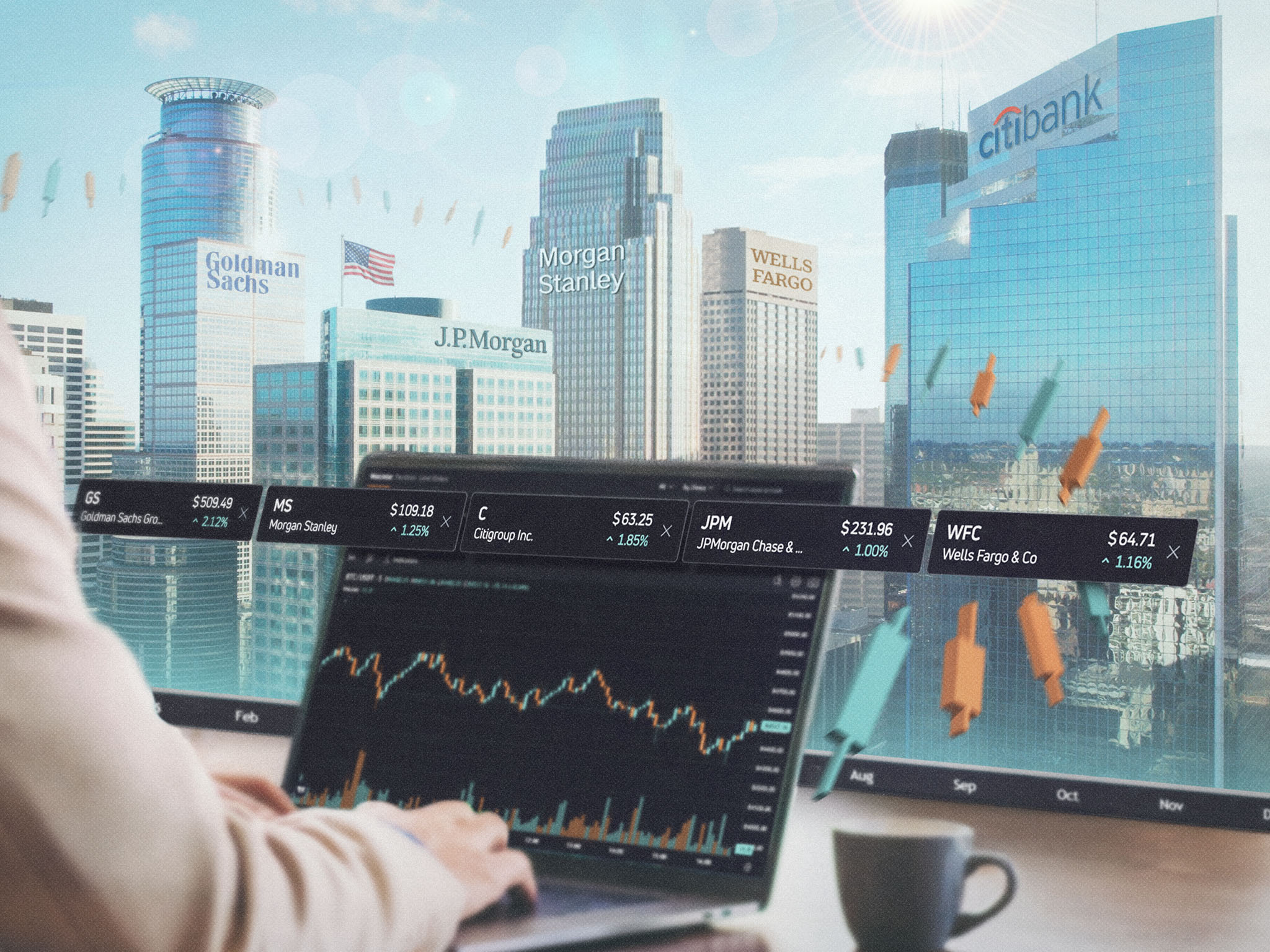Major US banks produced strong earnings for the first quarter, fueled by explosive trading results. But the good news may not last, thanks to economic weakness.
Since bank earnings season began April 11, the KBW Nasdaq Bank Index has climbed 2.5%, compared to just a 0.3% gain for the S&P 500.
Banks such as JPMorgan Chase (NYSE: JPM), Goldman Sachs (NYSE: GS) and Morgan Stanley (NYSE: MS) scored major trading profits in the first quarter, taking advantage of the market volatility that was stoked by concern about US tariffs. JPMorgan’s trading revenue soared 21% from a year earlier to $9.7 billion, with the equities segment hitting a record high.
Investment banking, wealth management, gains
Some banks did well in investment banking too, due to the after-effects of 2.4% annualized GDP growth in the fourth quarter. Both JPMorgan and Citigroup (NYSE: C) saw a 12% increase in that segment for the first quarter.
Morgan Stanley benefited from its wealth management prowess, with revenue in that sector climbing 5.8% in the first quarter from a year earlier to $7.3 billion. Citigroup registered a 24% increase to $2.1 billion in wealth management. The bull stock market until February created plenty of wealth to produce those increases.
There was some good news on the lending side too. Wells Fargo (NYSE: WFC) cut its loan-loss provision in the first quarter by 15% from a quarter earlier to $932 million. Its net loan charge-offs dropped by 17%. These numbers indicate that borrowers are in good financial shape.
Trouble ahead
But the outlook going forward isn’t as rosy. Most economists predict US tariffs and the haphazard way in which they’re being implemented will boost inflation and slow economic growth. Many economists see a recession coming within the next year.
That would obviously hurt banks. Major bank CEOs offered a large dose of caution along with their first-quarter earnings reports. JPMorgan Chase CEO Jamie Dimon said he anticipates “turbulence” and “uncertainty” for the economy. Wells Fargo and Morgan Stanley CEOs said essentially the same thing.
To be sure, big banks cited increases in consumer spending for the first quarter and said that remained strong in the beginning of this quarter, despite the turmoil of tariff policy. But whether spending will hold up for consumers and businesses remains a major question mark.
One wild card for banks is long-term interest rates. The question is what happens if they rise, as they did violently from April 5-11.
Higher long-term rates are generally good for banks. That’s because interest payments on their loans and bond holdings go up, while the interest rates they pay on deposits rise more slowly, if at all.
But if rising long-term rates come with rising inflation, that can hurt banks, especially if it’s accompanied by slower or negative economic growth (stagflation).
So it looks like a volatile period is ahead for banks.




Comments